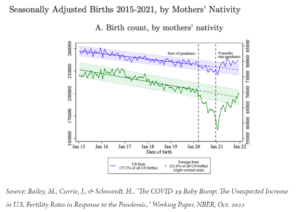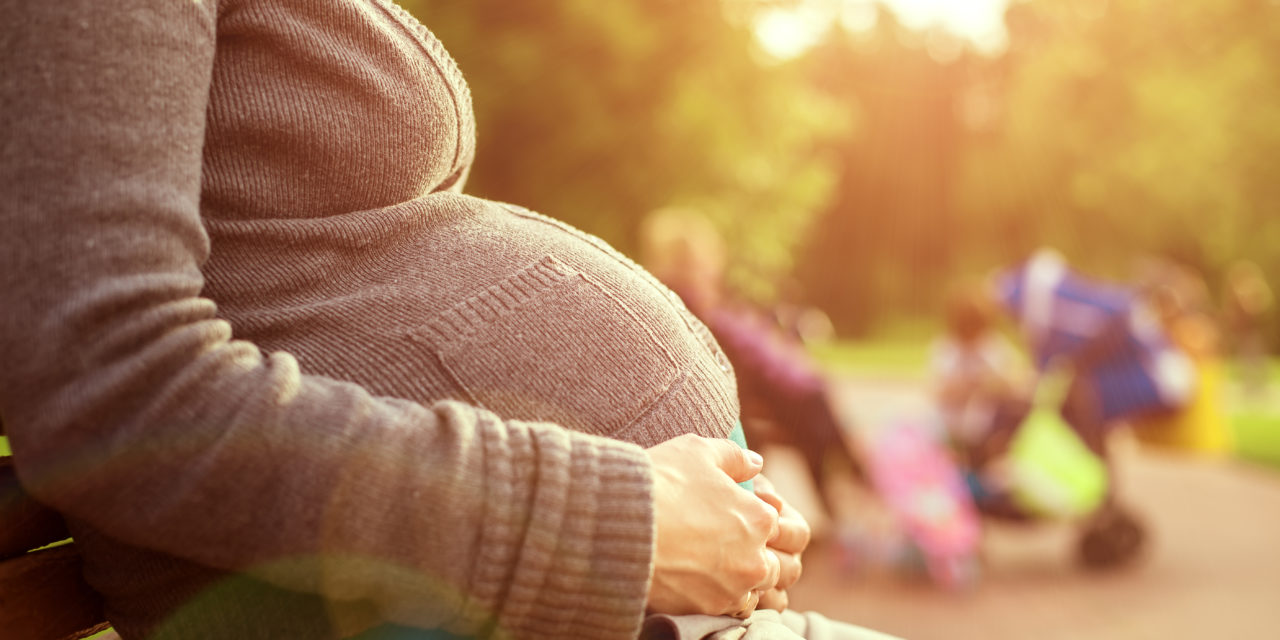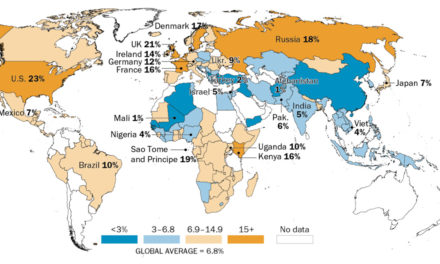When the COVID-19 pandemic shut down much of the globe in early 2020, the Daily Citizen staff speculated whether the long months of enforced time at home would result in higher birth rates in the following years. That same speculation continued in various corners of society with various answers offered – both negative and positive – as lock-downs have subsided.
But brand new data reported on by the Institute for Family Studies (IFS) indicates that those long months alone at home seeking to stay safe actually encouraged couples to become mothers and fathers. And the greatest increase was found among first-time parents in their early twenties.
Family scholar Patrick T. Brown explains that some indicators show “fertility did virtually flat-line with the pandemic” but a new academic working-paper from the prestigious Nation Bureau of Economic Research (NBER) adds some important clarity to that conclusion. This new research was conducted by scholars working cooperatively from UCLA, Princeton, and Northwestern University.
This new report explains that while the U.S. fertility rate shrank by 2% below expected projections in 2020, “the new restricted microdata [this team used for their analysis] show that this moderate decline in childbearing belies a far more interesting story of how U.S. childbearing changed during the pandemic.” The IFS reports,
The biggest value-add from their paper is enabled by the restricted data; they are able to decompose the number of babies in the U.S. born to native-born women and those born outside the country. Doing so, they find that the COVID baby bust was heavily driven by foreign-born moms (see chart from the paper below), including those barred from entering the country by coronavirus-induced restrictions. [emphasis added]

So, much comes down to who was having the babies and where these babies were born.
The NBER scholars report, “Our results suggest that unlike any economic downturn in recent history, the COVID-19 [lockdown] increased rather than decreased fertility among U.S.-born women.” [emphasis added] Brown explains in his IFS report, “So, their [NBER] finding that native-born women increased their fertility by over 5% relative to the counterfactual is a truly remarkable occurrence; but, for comparison’s sake, that rebound puts the overall number of births back to where it was in 2019.”
Thus, the appearance of a flat COVID birth rate. But that conclusion is deceptive.
The NBER scholars explain in the introduction of their paper, “This 2021 ‘baby bump’ is the first major reversal in the U.S. fertility rates since the 2007 Great Recession and was large enough to reverse two years of declining fertility rates.”
What is even more encouraging is who was giving birth in greater numbers through the pandemic.
The working paper makes clear, “The baby bump was most pronounced among first births and among women under 25, suggesting that the pandemic led many women to start their families sooner.” They add the COVID baby bump was “also pronounced among women 30-34 and among those ages 25-44 with a college degree or more.”
The NBER team concludes with the very encouraging news that “this baby bump appears to be ongoing” as the pandemic recedes. Other data, previously reported by the Daily Citizen, supports this conclusion.
This is truly good news as growing populations are tremendously important to national growth, not to mention that all new life is precious and a welcomed gift of God.
Photo from Shutterstock.






